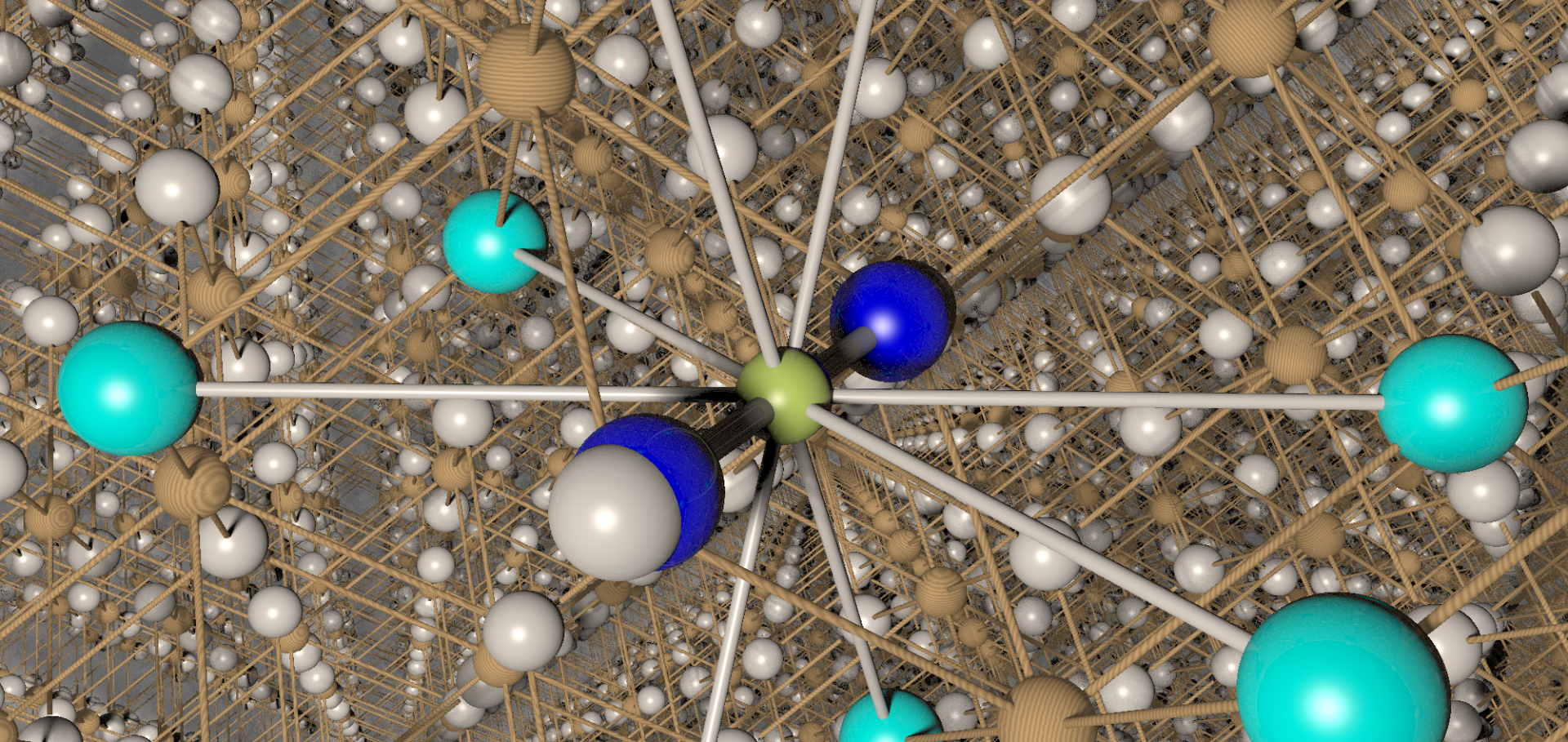Effect of magnesium doping on the orbital and magnetic order in LiNiO2
Physical Review B - Condensed Matter and Materials Physics 78:10 (2008)
Abstract:
In LiNiO2, the Ni3+ ions, with S=1/2 and twofold orbital degeneracy, are arranged on a triangular lattice. Using muon-spin relaxation and electron-spin resonance (ESR), we show that magnesium doping does not stabilize any magnetic or orbital order despite the absence of interplane Ni2+. A disordered, slowly fluctuating state develops below 12 K. In addition, we find that magnons are excited on the time scale of the ESR experiment. At the same time, a g factor anisotropy is observed, in agreement with | 3 z2 - r2 orbital occupancy. © 2008 The American Physical Society.Determination of characteristic muon precession and relaxation signals in FeAs and FeAs2, possible impurity phases in pnictide superconductors
(2008)
Coexistence of magnetic fluctuations and superconductivity in the pnictide high temperature superconductor SmFeAsO1-xFx measured by muon spin rotation.
Phys Rev Lett 101:9 (2008) 097010
Abstract:
Muon spin rotation experiments were performed on the pnictide high temperature superconductor SmFeAsO1-xFx with x=0.18 and 0.3. We observed an unusual enhancement of slow spin fluctuations in the vicinity of the superconducting transition which suggests that the spin fluctuations contribute to the formation of an unconventional superconducting state. An estimate of the in-plane penetration depth lambda ab(0)=190(5) nm was obtained, which confirms that the pnictide superconductors obey an Uemura-style relationship between Tc and lambda ab(0);(-2).Isotope effect in quasi-two-dimensional metal-organic antiferromagnets
Physical Review B - Condensed Matter and Materials Physics 78:5 (2008)
Abstract:
Although the isotope effect in superconducting materials is well documented, changes in the magnetic properties of antiferromagnets due to isotopic substitution are seldom discussed and remain poorly understood. This is perhaps surprising given the possible link between the quasi-two-dimensional (Q2D) antiferromagnetic and superconducting phases of the layered cuprates. Here we report the experimental observation of shifts in the Néel temperature and critical magnetic fields (Δ TN / TN ≈4%; Δ Bc / Bc ≈4%) in a Q2D organic molecular antiferromagnet on substitution of hydrogen for deuterium. These compounds are characterized by strong hydrogen bonds through which the dominant superexchange is mediated. We evaluate how the in-plane and interplane exchange energies evolve as the atoms of hydrogen on different ligands are substituted, and suggest a possible mechanism for this effect in terms of the relative exchange efficiency of hydrogen and deuterium bonds. © 2008 The American Physical Society.Experimentally determining the exchange parameters of quasi-two-dimensional Heisenberg magets
New Journal of Physics 10 (2008)


